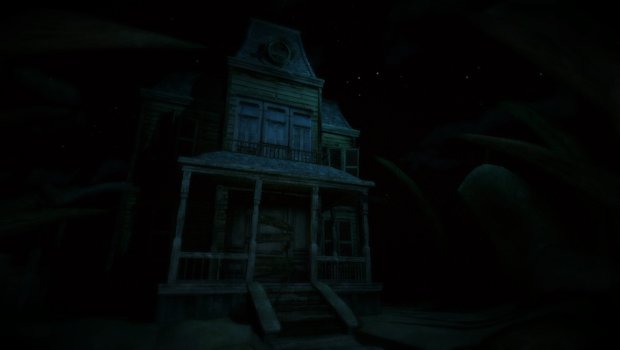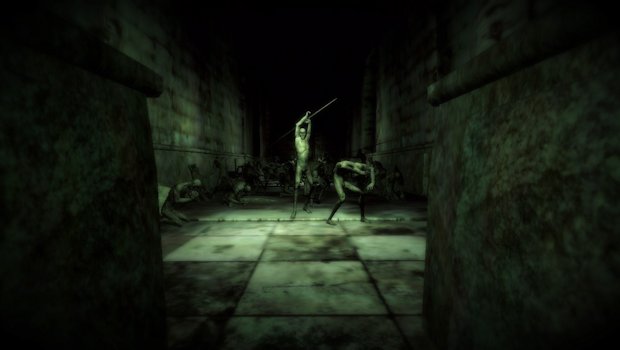Driven by the success of Amnesia: The Dark Descent, first person horror is all the rage. Already this year we have received Outlast and Amnesia: A Machine for Pigs, two games that effectively do the same things but in different ways. And now we get Doorways, the third entry into the genre in a month, and it intends to scare players with ghostly images and deadly sculptures.
Like a lot of independently-developed games, Doorways had an interesting road to release. Developed in Argentina by Saibot Studios, the game was famously funded by the studio head’s uncle, a partner in a fumigation business. It then took its concept to the people via Steam Greenlight, where its concept resonated with players and was ultimately chosen for release of Steam. And it’s release marks the first game from Argentina to make its way through the Greenlight process.
That concept which so resonated with players is the same one that caught my eye: first person, survival horror where you play a detective of sorts tasked with tracking down four sadistic killers. The name Doorways serves a trio of purposes. The first is that it is the title of the game. The second is that it is the name of the special investigative unit that is tracking down these four killers. And finally it is a literal explanation of the tutorial of the game, as you will work your way through different doorways to advance to the main story.
Speaking of the story, the game just throws players into the thick of it. As I started the game, I was given a marginal explanation of what I was doing here. I knew I was on the trail of a murderer for my employer Doorways, and that my path would take me through a dreary forest. Outside of that, I was in the dark. Along the path I found journal entries strewn about the environment. I am still not entirely certain what these entries were for as they did nothing but muddle things further.
As I played further into the game, it became quite clear the story was inconsequential to the overall experience, and nothing sold me on this fact more than the abrupt and unsatisfying ending to the first chapter. What happened? Did I catch the killer? Did I get justice for those he wronged? None of these questions were answered; instead, the game simply transported me to a new locale with a new killer to track down. But was I actually tracking him down this time or was it just an investigative mind-warp? This lack of coherent narrative eats away at Doorways’ sense of place, and without that, there is no tension. As such, the game is ineffective as a horror title.
Taken as just a mechanical exercise, Doorways fares only slightly better. One of the first tasks players are set upon is finding a light source to traverse the haunted forest. Without a torch, rejects from The Ring will quickly descend on the player, killing them. Finding a torch is easy; keeping it lit is another matter entirely, as it burns out naturally in just a few moments and extinguishes instantly if you happen to jump. While obviously designed to develop tension, I only found myself frustrated by the rule’s flimsy nature. More frustrating was the game forcing me to learn its rule only to cast it aside never to be used again once I got through the forest. And this happens over and over in the game, with the game consistently spending a portion of its scant two hours introducing a mechanic only to discard it moments later in favor of something new.
Because of this, there is no evolution to the gameplay, and as such the game feels very simplistic. Maybe chapters three and four, when released later on down the line, will expand on the concepts introduced here, but as it stands, the game feels half baked (no pun intended). With no coherent narrative, its simplistic gameplay, and games like Outlast and Amnesia: A Machine for Pigs doing what this game wants to do but doing it properly, it is really hard to recommend Doorways to fans of the genre, let alone anyone else.
Note: This review was written with material received from the publisher. For more on our review process, please read here.

